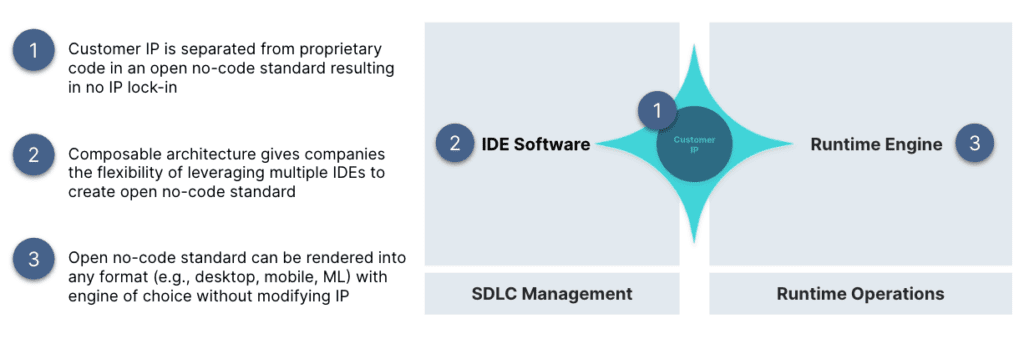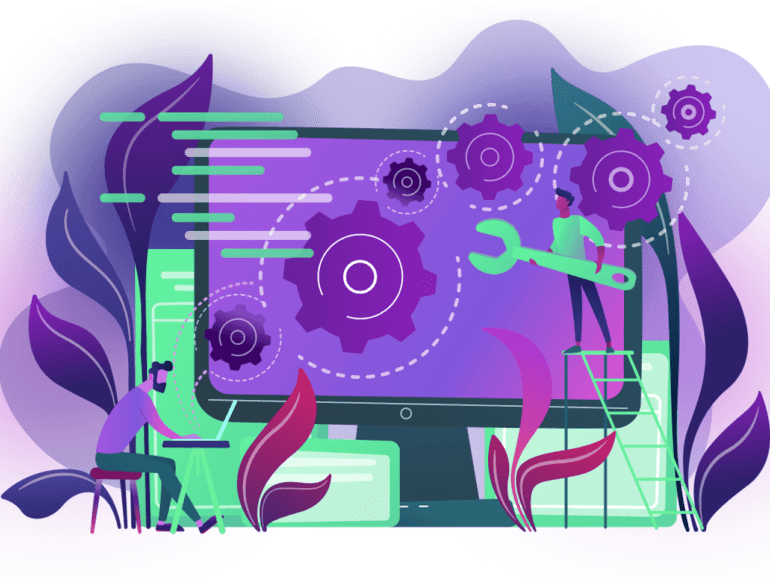Although many in the TradFi sector feel it’s too early to hop on the DeFi bandwagon, adoption seems to be slowly taking hold.
Announcements of digital assets platforms and custodial solutions litter the headlines, and increasingly surveys show an interest in DeFi development despite the downturn.
The sector is seen as complicated, full of Discord jargon, unclear regulations, and strange coding languages—many citing as these the most significant barriers to adoption within TradFi entities. However, steps are being made to simplify integration.
Codeless steps made toward DeFi adoption
Securrency and Unqork have partnered to launch a private markets asset tokenization solution built using codeless architecture, they announced today.
The two companies are leaders in their fields. The solution combines Securrency’s experience developing financial markets infrastructure with Unqork’s codeless expertise.
The solution can be adjusted to meet specific needs, facilitating user onboarding with customizable workflows. It can also be used to digitally design and execute fund documents, tokenize and distribute funds, and conduct transactions for real-time fund subscriptions and redemptions.
It marks the first time codeless technology has been used to build, deploy, and manage a blockchain-based solution for tokenized private securities and other assets.

“By harnessing the power of blockchain technology to create tokenized assets, automate compliance, and streamline financial transactions, Securrency and Unqork are unlocking the value of digital marketplaces for investors and financial institutions,” said Dan Doney, CEO of Securrency.
“We recognized the tremendous value in what Unqork’s codeless architecture can deliver and are excited to use it with our Capital Markets Platform to help customers grow their private markets businesses and provide greater liquidity and access to investors.”
What is codeless architecture?
You may think, “Wait a second, what the heck is CODELESS architecture?”
The traditional approach to application building is using code; it’s been that way for decades. However, as applications and the needs of users have become increasingly complex as digitalization takes hold, the code has followed suit. This has meant applications and processes have become slower in execution.
For the past decade, cloud technology has brought the industry serverless architecture, improving the complex code situation. This approach does away with traditional server management, allowing developers to build and run applications using cloud providers instead.
Without going too much into serverless, its development over the past decade has been significant, bringing many benefits to the execution of applications and digital processes.
Codeless architecture has emerged with similar objectives, simplifying the development and running of applications. Developers can use modular components in a visual environment to build. The code “simply vanishes.”
Underlying code and legacy infrastructure can remain untouched, with additional updates conducted in their module, speeding up the process and increasing the ease of innovation. Scalability, reusability, and upgradeability are all enabled while allowing for increased security by using tried and tested code instead of custom new code, which may have vulnerabilities.

Supercharging incumbent adoption of Web3
While codeless architecture is increasingly used in Web2 applications, Web3 is a new frontier.
“For years, Unqork’s codeless platform has been used by some of the world’s largest financial institutions to build mission-critical applications. We are excited to bring codeless architecture to digital assets to address some of the most important priorities in this growing industry, empowering enterprises with built-in composability, security, and scalability for their most complex applications,” said Gary Hoberman, CEO, and founder, of Unqork.

Although the adoption of DeFi in TradFi is relatively slow, developments like that executed by Unqork and Securrency could make a difference.
The DeFi world sees a lack of understanding as a significant barrier to adoption. This makes compliance and security within the space seem hard to achieve. Traditional players are nervous.
The modular components of codeless architecture could speed up developing solutions.
Built apart from legacy architecture, the codeless architecture can be adjusted easily to keep up with the shifting regulatory environment. In addition, the reuse of tried and tested modules could reduce vulnerabilities in security.
The solution developed by Unqork and Securrency is focused on private markets customers. It is said to provide financial institutions with the features needed to launch a digital asset marketplace.
Tackling tokenization compliance
Securrency’s framework targets the issues of tokenization and liquidity within DeFi. The company was built with the automation of compliant processes in mind.
In an interview with Peter Renton earlier this year, Doney said, “To get liquidity, you must have compliance. In other words, if I’m going to easily and conveniently transact in forms of value, I must have compliance, it follows that same pace, and that means being able to automate many aspects of compliance that others would have considered to be untouchable.”
“It took a lot of work to build out that core component, and then along the way, we found other key challenges.”
“You can’t have liquidity without interoperability, you can’t have liquidity without sufficient pricing, and that requires sufficient data, so all of these challenges come together into repurposed capital markets where you have efficient transactions at any level… So, we built out a very comprehensive core financial services infrastructure.”
The press release announcing the partnership and the solution’s launch stated that it “Ensures stability, interoperability, and efficiency at every step of the digital asset lifecycle.”
Aside from reporting and analytics, the infrastructure developed by Securrency for the product provides self-guided onboarding and KYC, along with leveraging the Compliance Aware Tokenization®. This is then combined with Unqork’s codeless architecture.
RELATED: Podcast 375: Dan Doney of Securrency


